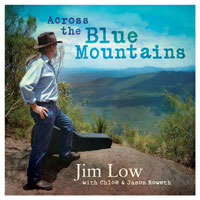
BATHURST, MAY 7, 1822.
![]()
I told you in my last of our intended journey across the Blue Mountains; we have accomplished it, and as I think it may prove interesting to you I shall be very particular in my account of it. It took some time after my last to make the necessary arrangements here for a house to receive us, and for us to be certain of the necessary assistance from the Governor before we could leave Sydney; all was ready on 4th April (Good Friday), and on the morning of the 5th we commenced our journey. We had many presents and kind wishes from those around us, indeed there was not a dry eye in the family of our landlord.
DAY 2 (Saturday April 5th)
You or no one in England, will hardly credit me when I tell you the number of horses, bullocks, carts, etc., requisite to convey us, when we possessed no furniture but one table and twelve chairs; these, with our cooking utensils, bedding, and a few agricultural implements, groceries and other necessaries to last us a few months, with our clothes, constituted the whole of our luggage. We had a wagon with six bullocks, a dray with five, another dray with three horses, a cart with two, and, last of all, a tilted cart, with mother myself, and seven children, with two horses. Hawkins and Tom rode on horseback.
The cavalcade moved slowly on, the morning was fine, and the road equal to any turnpike road in England, with a forest on each side, but the sun is not prevented from reaching the earth, as all the trees are lofty and only branch from the top.
When within a few miles of Parramatta, Hawkins rode on to the Factory for a female servant who had been selected for us. He rejoined us whilst we were partaking our dinner at the foot of a tree. We arrived rather late in the evening at Rooty Hill, a distance of twenty-five miles; the Government House was ready to receive us.
DAY 3
The next day being Sunday, we rested, partly to recover from the fatigue we had previous to leaving Sydney, and because the general orders were, there should be no travelling on Sunday. I could have been contented to have remained there for ever—the house was good and the land all around like a fine wooded park in England.
DAY 4
On Monday we resumed our journey, and for nine miles found the road the same as before. We had now reached the Nepean River, which you cross to Emu Plains, where there is a Govt. House and Depot, but beyond these there are no habitations until you reach Bathurst, excepting a solitary house at the different places where people sleep. We had to wait at a hut many hours until horses and carts were ready on the opposite side, as those which brought us from Sydney were to leave. We could only get part of our luggage over that night, and Sir John Jamison, who resided near, sent his head constable to guard the rest during the night.
DAY 5
The next day it rained hard, but through fear it might continue, when the water rushing from the mountains makes all the rivers in this country dangerous and impassable, we had the rest of our things brought over.
DAYS 6 and 7
The next day was occupied in getting things dry, and the following one in making necessary preparations for the journey, unpacking many things to ensure their greater safety, arranging our provisions and bedding to enable us to get at them more conveniently. This being done at five o'clock, Hawkins and I went to dine with Sir J. Jamison, who had invited a lady and two gentle-men to meet us; here we partook of a sumptuous repast, consisting of mock-turtle soup, boiled fowls, round of beef, delicious fish of three kinds, curried duck, goose and wild-fowl, Madeira and Burgundy, with various liquors and English ale. I mention all this to show you his hospitality, and convince you it is possible for people to live here as well as in England. I was delighted with his garden. The apples and quinces were larger than I ever saw them before (it is now autumn in this country), and many early trees of the former were again in blossom. The vines had a second crop of grapes, and the fig trees a third crop. The peaches and apricots here are standing trees. He has English cherries, plums, and filberts. These, with oranges, lemons, limes, and citrons, medlars, almonds, rock and water melons, with all the common fruits of England; vegetables of all kinds, and grown at all seasons of the year, which show how fine the climate is.

